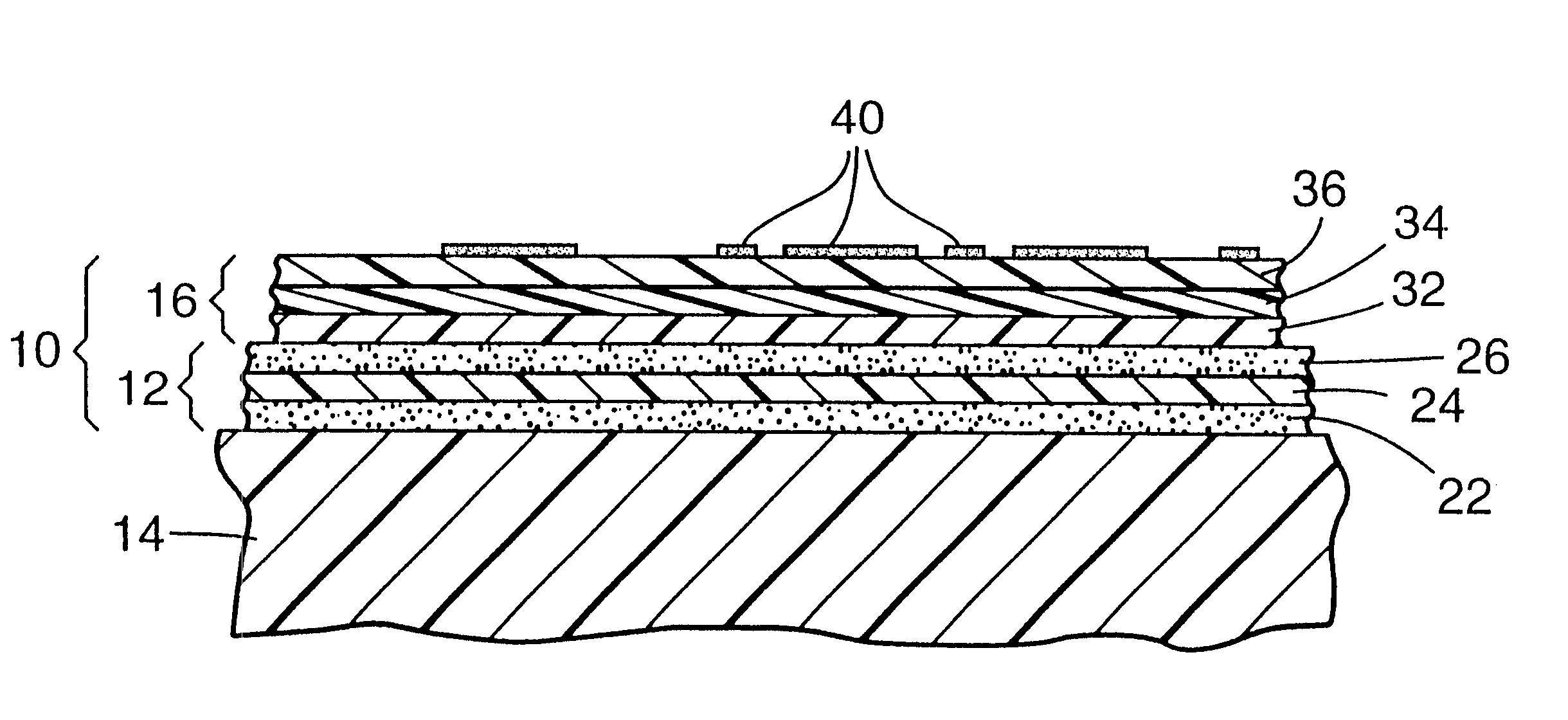Image graphic adhesive system and method for using same
a graphic adhesive and image technology, applied in the field of image graphic adhesive system and method for using same, can solve the problems of low and limited low adhesive holding power, and inability to clean to restore original holding power of adhesive, etc., to achieve a controlled and durably secure attachment
- Summary
- Abstract
- Description
- Claims
- Application Information
AI Technical Summary
Benefits of technology
Problems solved by technology
Method used
Image
Examples
example 1
A painted sheet metal sign board designed for the display of advertising graphics was chosen as a substrate. The two surfaces used for mounting graphics were made of painted steel and had dimensions of 85 cm.times.60 cm.
A DIN A4 (21 cm.times.29.7 cm) sheet of double-coated adhesive sheet having a high tack acrylic PSA on one side and a low tack acrylic PSA on the other side, available as Tape No. 9415 High Tack / Low Tack Double-Coated Tape from 3M Company, St. Paul, Minn., USA, was laminated to cover a portion of one of the two surfaces of the advertising board. The sheet, available in roll form with a single liner applied to the low adhesion side of the sheet, was unrolled and cut to the appropriate size. The unlinered high-adhesion side was applied to the painted metal surface using a rubber-coated roller. The liner was removed from the low adhesion side. A sheet of recyclable notepad paper (50 g, available as No 367405008 from Landre of Vianen, the Netherlands) bearing a hand writ...
example 2
Example 1 was repeated with the exception that a sheet of paper suitable for use with a black and white photocopier (available as FAVORIT X, No. 9366 / 080 / 05 / 04--80 g) was printed with an image using a photocopier. The paper bearing the photocopied image was used as an image graphic.
The image graphic was then laminated by hand to the exposed low adhesion side of the double-coated adhesive double-coated adhesive sheet after removal of the liner. The printed paper image graphic was removable from the adhesive surface after 24 hours with no lifting of the double-coated adhesive sheet from the substrate.
example 3
Example 1 was repeated with the exception that a sheet of paper suitable for use with a laser printer (available as FAVORIT X, No. 9366 / 080 / 05 / 04--80 g) was printed with an image using a laser printer. The printed paper was used as an image graphic.
The image graphic was then laminated by hand to the exposed low adhesion side of the double-coated adhesive after removal of the liner. The printed paper image graphic was removable from the adhesive surface after 24 hours with no lifting of the double-coated adhesive sheet from the substrate.
PUM
| Property | Measurement | Unit |
|---|---|---|
| angles | aaaaa | aaaaa |
| angles | aaaaa | aaaaa |
| thick | aaaaa | aaaaa |
Abstract
Description
Claims
Application Information
 Login to View More
Login to View More - R&D
- Intellectual Property
- Life Sciences
- Materials
- Tech Scout
- Unparalleled Data Quality
- Higher Quality Content
- 60% Fewer Hallucinations
Browse by: Latest US Patents, China's latest patents, Technical Efficacy Thesaurus, Application Domain, Technology Topic, Popular Technical Reports.
© 2025 PatSnap. All rights reserved.Legal|Privacy policy|Modern Slavery Act Transparency Statement|Sitemap|About US| Contact US: help@patsnap.com


